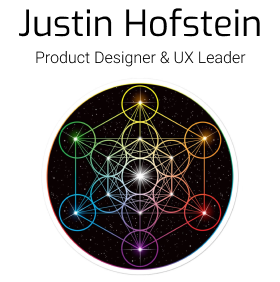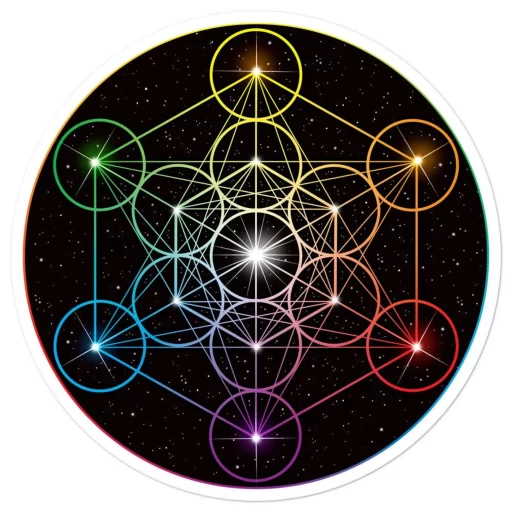Crown Castle
Leading a complex UX Research project for optimal customer experience.

Details:
Category:User Experience Research
Employer:Crown Castle
Skills:Research Planing & Execution
Crown Castle owns, operates and leases more than 40,000 cell towers and approximately 90,000 route miles of fiber supporting small cells and fiber solutions across every major U.S. market. This nationwide portfolio of communications infrastructure connects cities and communities to essential data, technology and wireless service – bringing information, ideas and innovations to the people and businesses that need them.
This case study is the largest user experience research project I led during my time as a Product Designer.

Our Problem Statement
Crown Castle sales reps need to constantly respond to quote requests for fiber networking services from our partners (customers). These requests come in by the thousands and take time to gather the serviceability and cost of the quote. This can take a large amount of time for our sales reps and can cause delays to our partners.
Our Problem Statement
Crown Castle sales reps need to constantly respond to quote requests for fiber networking services from our partners (customers). These requests come in by the thousands and take time to gather the serviceability and cost of the quote. This can take a large amount of time for our sales reps and can cause delays to our partners.
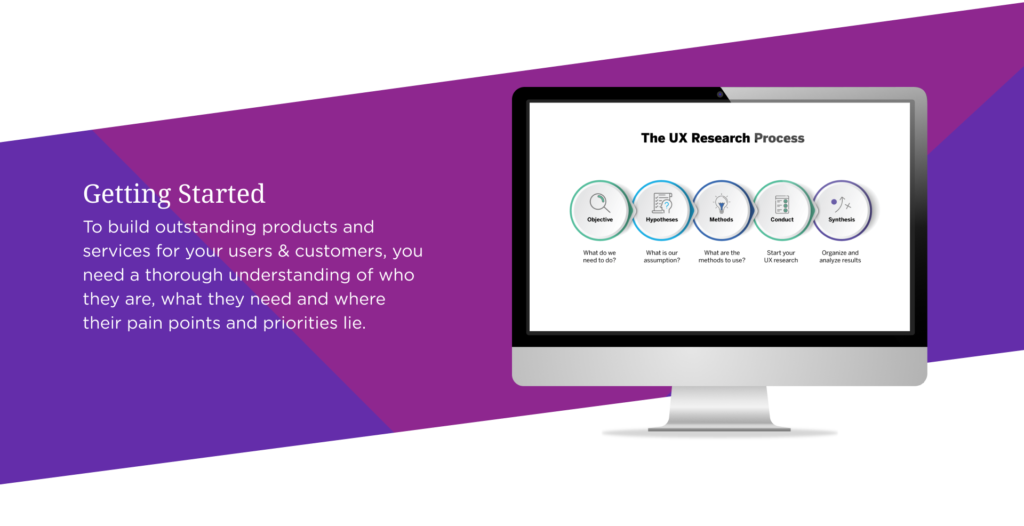
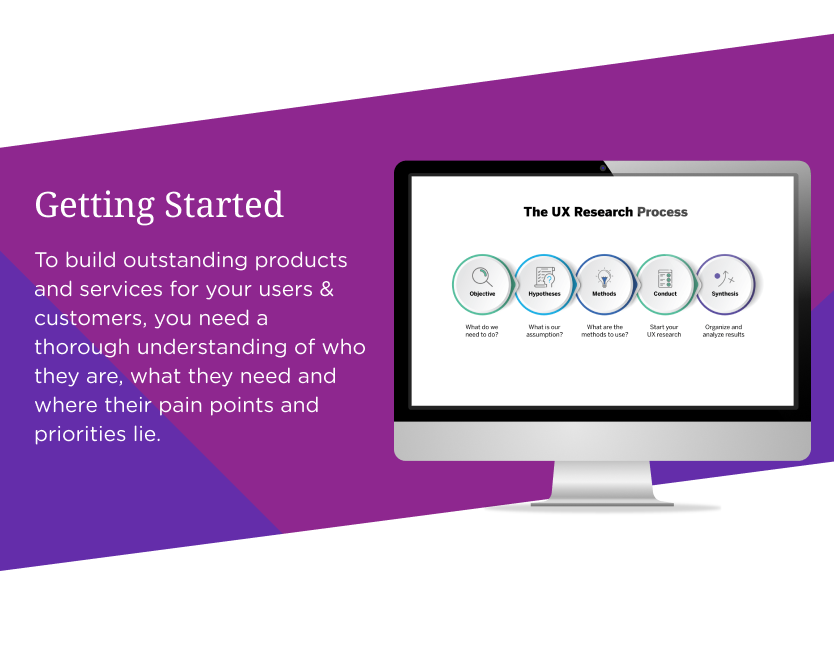
UX Research Planning
This was a unique UX Research project. Compared to other projects I have led, this one did not have the ultimate goal of a user interface. Instead, this was the first time I was challenged to understand a customer base from a ground level inside a very complex industry I had just entered. It required outreach and extensive interviews internally for my education and externally for the solutions. A strong UXR plan was critical to this.
UX Research Planning
This was a unique UX Research project. Compared to other projects I have led, this one did not have the ultimate goal of a user interface. Instead, this was the first time I was challenged to understand a customer base from a ground level inside a very complex industry I had just entered. It required outreach and extensive interviews internally for my education and externally for the solutions. A strong UXR plan was critical to this.

Research Goals
Establish competitive research on internal purchasing solutions partners are currently using to find the optimal way to respond to quote requests. Get a direct understanding of how our partners perceive Crown Castle to serve their needs better overall. Evaluate partners who can co-develop and work on a proven solution together. Ultimately, this research provided quick wins that can improve the purchasing experience and the next steps for the company to elevate in the industry.
Research Goals
Establish competitive research on internal purchasing solutions partners are currently using to find the optimal way to respond to quote requests. Get a direct understanding of how our partners perceive Crown Castle to serve their needs better overall. Evaluate partners who can co-develop and work on a proven solution together. Ultimately, this research provided quick wins that can improve the purchasing experience and the next steps for the company to elevate in the industry.


Our Approach
The initial timeline had three weeks of setup and three weeks of planning and interviews. We quickly realized that it would take much longer to organize the external interviews. We had to reach out to each respective sales director and then slowly evangelize our project to sign partners up. We adapted and were able to find nine different partners who were excited to work together.
Our target audience was buyers across multiple purchasing channels and technology strategy owners. Three partners from each partner group had to be solicited and interviewed numerous times. My other target audience was internal SMEs, which enabled me to become an expert on current processes.
User Intention Model
User & Role-Based Personas: Visualize and describe the target user or user segment for whom the solution will be designed. Include demographics, behavior patterns, goals, motivations, and pain points.
Primary User Goals: List the main objectives partners aim to achieve when purchasing our products or services.
Secondary User Goals: Additional tasks might happen while interacting with our products.
User Pain Points: Enumerate users' challenges, frustrations, or obstacles while using our product or services, and understanding these pain points helped address them and improve the overall user experience.
User Context: Describing the typical scenarios and contexts in which partners engage with the product or service.
User Motivations: Understanding user motivations helped to create a more compelling and engaging experience.
Emotional Impact: Assess the emotional aspects of user interactions with the Crown Castle and our services.
User Feedback and Data: This data provides evidence to support the identified user intentions and guide our crucial design decisions.
User Flows: Visualize the typical user journey and flow through the product or service, highlighting key touchpoints and decision-making stages.
User Expectations: Understand users' expectations when interacting with the product or service. Meeting or exceeding these expectations is vital for a positive user experience.
UX Solutions: Proposed solutions or improvements to address the user intentions and pain points. These solutions were aligned with the user's goals and preferences.
Our Approach
The initial timeline had three weeks of setup and three weeks of planning and interviews. We quickly realized that it would take much longer to organize the external interviews. We had to reach out to each respective sales director and then slowly evangelize our project to sign partners up. We adapted and were able to find nine different partners who were excited to work together.
Our target audience was buyers across multiple purchasing channels and technology strategy owners. Three partners from each partner group had to be solicited and interviewed numerous times. My other target audience was internal SMEs, which enabled me to become an expert on current processes.
User Intention Model
User & Role-Based Personas: Visualize and describe the target user or user segment for whom the solution will be designed. Include demographics, behavior patterns, goals, motivations, and pain points.
Primary User Goals: List the main objectives partners aim to achieve when purchasing our products or services.
Secondary User Goals: Additional tasks might happen while interacting with our products.
User Pain Points: Enumerate users' challenges, frustrations, or obstacles while using our product or services, and understanding these pain points helped address them and improve the overall user experience.
User Context: Describing the typical scenarios and contexts in which partners engage with the product or service.
User Motivations: Understanding user motivations helped to create a more compelling and engaging experience.
Emotional Impact: Assess the emotional aspects of user interactions with the Crown Castle and our services.
User Feedback and Data: This data provides evidence to support the identified user intentions and guide our crucial design decisions.
User Flows: Visualize the typical user journey and flow through the product or service, highlighting key touchpoints and decision-making stages.
.
User Expectations: Understand users' expectations when interacting with the product or service. Meeting or exceeding these expectations is vital for a positive user experience.
UX Solutions: Proposed solutions or improvements to address the user intentions and pain points. These solutions were aligned with the user's goals and preferences.

The Process
The UXR Process included internal interviews and user workflow observations to build my knowledge of current affairs. This allowed me to create a current-state journey map, role-based personas, and supporting documentation to educate all team members and myself.
Over the month, I organized eighteen interviews between the nine external partners. With the detailed notes and limited video recordings, I put together a comprehensive UXR Summary for the executive leadership team.
The Process
The UXR Process included internal interviews and user workflow observations to build my knowledge of current affairs. This allowed me to create a current-state journey map, role-based personas, and supporting documentation to educate all team members and myself.
Over the month, I organized eighteen interviews between the nine external partners. With the detailed notes and limited video recordings, I put together a comprehensive UXR Summary for the executive leadership team.
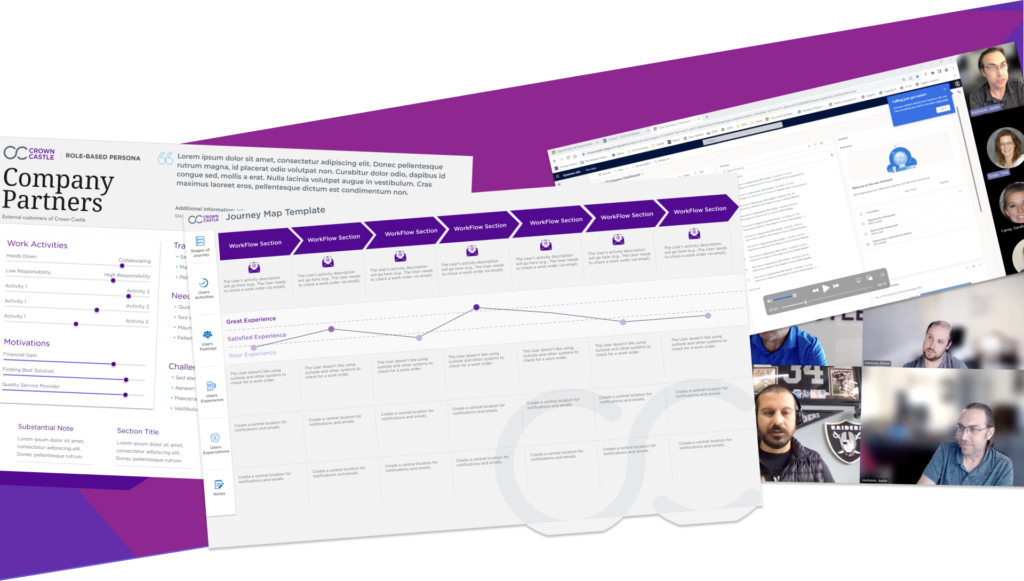
The Impact
The north stars for the project included recommendations for growth improvements & intelligence capture to build growth analytics across products & customers. We provided key insights that allowed us to deliver research-backed quick wins & long-term goals.
Outcomes:
-
Deep understanding of internal sales processes supported by user videos, extensive notes, visual journey maps & role-based personas.
Direct insights into our partner’s perception of Crown Castle and knowledge to improve where needed.
Pinpointed several key insights that were repeated patterns to give a clear direction for the next steps.
Built relationships with co-developmental teams to enable our solutions.
Overall data-based suggestions on the initial quick wins and long-term goals.
The Impact
The north stars for the project included recommendations for growth improvements & intelligence capture to build growth analytics across products & customers. We provided key insights that allowed us to deliver research-backed quick wins & long-term goals.
Outcomes:
-
Deep understanding of internal sales processes supported by user videos, extensive notes, visual journey maps & role-based personas.
Direct insights into our partner’s perception of Crown Castle and knowledge to improve where needed.
Pinpointed several key insights that were repeated patterns to give a clear direction for the next steps.
Built relationships with co-developmental teams to enable our solutions.
Overall data-based suggestions on the initial quick wins and long-term goals.
Lessons Learned
This experience was the largest and most unique UXR project I enjoyed facilitating. I was brand new to the networking industry, so I had to dedicate significant time to internal research.
With the assistance of many great co-workers and internal partners, I was able to overcome the daunting task at hand. I now have the confidence and proven record to lead any size of UXR project.
I also had to adjust my thought process away from user interfaces and only focus on customer interactions. This has given me a more flexible approach to UXR. I went outside the box to find the value in pure human purchasing interaction.
Lessons Learned
This experience was the largest and most unique UXR project I enjoyed facilitating. I was brand new to the networking industry, so I had to dedicate significant time to internal research.
With the assistance of many great co-workers and internal partners, I was able to overcome the daunting task at hand. I now have the confidence and proven record to lead any size of UXR project.
I also had to adjust my thought process away from user interfaces and only focus on customer interactions. This has given me a more flexible approach to UXR. I went outside the box to find the value in pure human purchasing interaction.
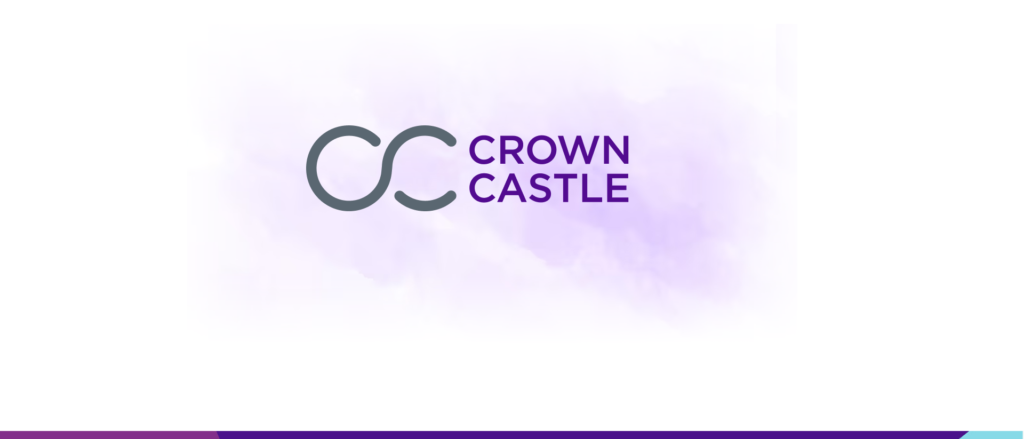
- Prev
- Prev
- Next
